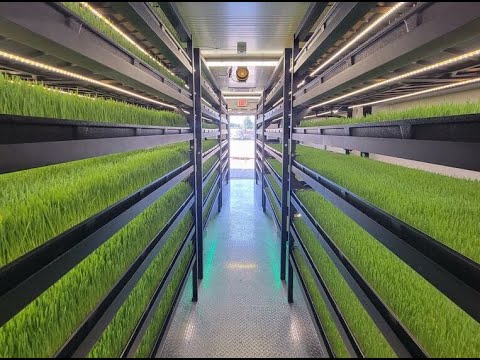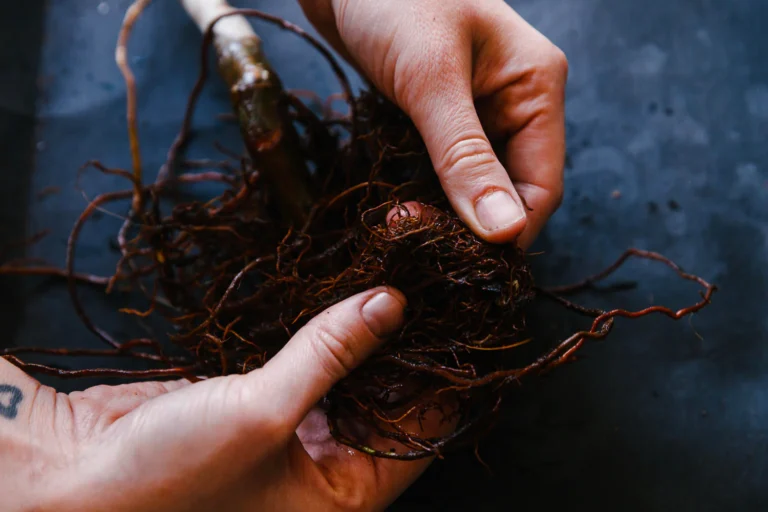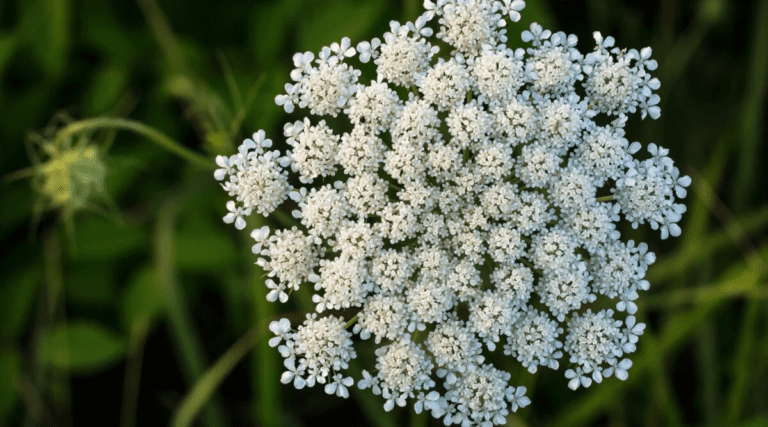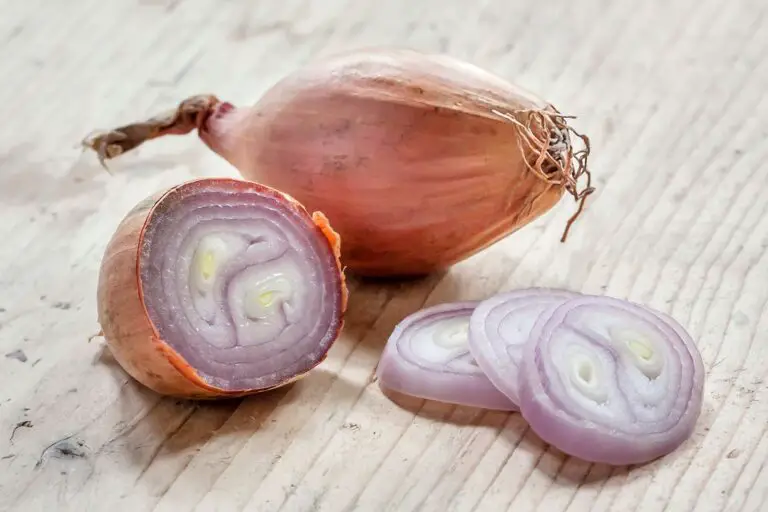Vapor Pressure Deficit (VPD): What It Is, How It Works, and How to Use It for Your Plants
Table of Contents
Understanding the Role of Moisture in Plant Health
Moisture plays a vital role in the overall health and well-being of plants. Whether you’re a seasoned gardener or a beginner with a green thumb, understanding the importance of moisture is essential for successful plant cultivation.
Water is crucial for plants as it serves as the primary component of their cells and tissues. It helps in various physiological processes, such as nutrient absorption, photosynthesis, and transpiration. Adequate moisture levels also support plant rigidity and structure, preventing wilting and dehydration.
Additionally, the presence of moisture in the soil facilitates the uptake of essential nutrients. As water moves through the plant’s root system, it carries vital minerals and organic compounds that are necessary for growth and development. Without sufficient moisture, plants may suffer from nutrient deficiencies, leading to stunted growth and poor overall health.
Moreover, moisture levels influence the pest and disease susceptibility of plants. Excessive moisture can create a favorable environment for the growth of harmful microorganisms, while insufficient moisture weakens the plants’ natural defense mechanisms. Maintaining the right balance of moisture not only promotes healthy growth but also reduces the risk of fungal infections and pest infestations.
In conclusion, understanding the role of moisture in plant health is fundamental for successful gardening and cultivation. By ensuring adequate moisture levels, we can provide plants with the optimal conditions they need to thrive.

The Relationship Between Temperature and Plant Transpiration
Plant transpiration is a vital process in the life of a plant, and temperature plays a significant role in regulating this physiological activity. Temperature influences the rate of transpiration by impacting the water potential within the plant and the surrounding environment. As the temperature rises, the rate of evaporation from the plant’s leaves increases, leading to a higher rate of water loss through transpiration. Conversely, colder temperatures result in reduced transpiration rates.
The relationship between temperature and plant transpiration can be further understood by considering the effect of temperature on the plant’s stomata. Stomata are small pores found on the surface of leaves that control the movement of gases, including water vapor, in and out of the plant. Higher temperatures cause the stomata to open wider, allowing for an increased exchange of gases, including the release of water vapor through transpiration. On the other hand, cooler temperatures lead to stomatal closure, limiting water loss and reducing transpiration rates.
It is important for gardeners and plant enthusiasts to understand the relationship between temperature and plant transpiration to effectively manage the water needs of their plants. By considering the temperature and adjusting irrigation schedules accordingly, one can ensure that plants receive adequate moisture without wasting water. Additionally, it is crucial to pay attention to temperature fluctuations during different times of the day and seasons, as they can impact transpiration rates. Overall, maintaining a balance between temperature and plant transpiration is essential for the health and vitality of plants in both natural and cultivated environments.
| Temperature and Plant Transpiration | Key Information |
|---|---|
| Impact on Transpiration Rates | – Higher temperatures increase evaporation and transpiration rates in plants, leading to more significant water loss. |
| Effect of Colder Temperatures | – Colder temperatures result in reduced transpiration rates as plants tend to conserve water under such conditions. |
| Role of Stomata in Transpiration | – Stomata, small pores on leaves, regulate plant transpiration. Higher temperatures cause stomata to open wider, increasing water vapor release. |
| Stomatal Response to Cooler Temperatures | – Cooler temperatures lead to stomatal closure, limiting water loss through transpiration. |
| Significance for Water Management | – Understanding the temperature-transpiration relationship is crucial for efficient water management. Adjusting irrigation based on temperature helps conserve water. |
| Monitoring Temperature Fluctuations | – Regular monitoring of temperature fluctuations is essential as they impact transpiration rates throughout the day and across seasons. |
How Humidity Affects Plant Growth and Development
Humidity plays a crucial role in the growth and development of plants. The level of moisture in the air can greatly impact various physiological processes, ultimately influencing the health and productivity of plants. One of the key ways in which humidity affects plants is through its influence on transpiration.
Transpiration, the process through which plants lose water vapor from their leaves, is directly influenced by the relative humidity of the surrounding environment. When the air is humid, the concentration of water vapor in the air is high, making it more difficult for plants to release water through their stomata—the small openings on the leaf surface. As a result, the rate of transpiration decreases, and plants may struggle to regulate their temperature effectively.
On the other hand, low humidity can lead to excessive water loss through transpiration. In arid or desert-like conditions, where humidity levels are often low, plants can lose water rapidly to the atmosphere. This can result in dehydration and stress, leading to stunted growth and reduced overall plant health. Additionally, low humidity can also increase the risk of wilting and leaf damage, further jeopardizing the plant’s ability to carry out essential physiological processes.
Balancing humidity levels is essential for ensuring optimal plant growth and development. Understanding the specific moisture needs of different plant species can help gardeners create suitable environments for their plants to thrive. By controlling humidity levels through proper ventilation, misting, or the use of moisture-retaining additives, gardeners can provide the ideal conditions for their plants, promoting healthy growth and maximizing yields.
Exploring the Concept of Water Vapor Pressure
Water vapor pressure is an essential concept in understanding the dynamics of moisture in the environment and its impact on plant health. When water is present in the form of vapor, it exerts a certain amount of pressure in the air. This pressure is determined by the temperature and humidity levels of the surrounding environment. As the temperature increases, the water vapor pressure also increases, as more water molecules gain sufficient energy to escape into the atmosphere.
The concept of water vapor pressure is crucial for plant health because it influences the movement of water molecules both within and outside the plant. When the water vapor pressure inside the plant is higher than the surrounding environment, transpiration occurs, allowing water to be transported from the roots to the leaves. On the other hand, if the water vapor pressure outside the plant is higher, plants may struggle to uptake water efficiently, leading to inadequate hydration and potential stress. Understanding water vapor pressure can help gardeners and growers optimize environmental conditions to ensure adequate water supply for plants, thus promoting their growth and development.

The Importance of Vapor Pressure Deficit in Plant Physiology
Vapor pressure deficit plays a crucial role in the overall physiology of plants. It is a key factor that influences plant water uptake and regulates various physiological processes. Essentially, vapor pressure deficit refers to the difference between the amount of moisture present in the air and the amount of moisture the air can hold at a particular temperature. This difference affects the movement of water vapor from the plant leaves into the surrounding atmosphere.
One of the primary functions of vapor pressure deficit in plant physiology is to drive transpiration. Transpiration is the process by which plants lose water through their leaves in the form of water vapor. This loss of water vapor is vital for plants as it contributes to cooling, nutrient uptake, and the movement of water and nutrients from the roots to other parts of the plant. In fact, transpiration is often considered to be the primary force behind the movement of water and dissolved minerals throughout the plant. By understanding the importance of vapor pressure deficit, gardeners and cultivators can optimize environmental conditions to enhance plant performance and maximize growth and yield.

Factors Influencing Vapor Pressure Deficit in the Environment
Factors Influencing Vapor Pressure Deficit in the Environment:
1. Temperature: One of the primary factors affecting vapor pressure deficit (VPD) in the environment is temperature. VPD is directly related to the difference between the actual vapor pressure (AVP) and the saturation vapor pressure (SVP) at a particular temperature. As temperature increases, the moisture-holding capacity of the air also increases, leading to a higher saturation vapor pressure. This, in turn, results in a larger vapor pressure deficit. Conversely, lower temperatures correspond to a smaller VPD. Hence, it is essential to consider temperature fluctuations when assessing and managing VPD levels in your plant cultivation environments.
2. Relative Humidity: Another crucial factor influencing VPD is relative humidity (RH). RH refers to the amount of moisture present in the air compared to the maximum amount it can hold at a given temperature. As RH decreases, the VPD increases because the difference between the AVP and the SVP becomes larger. In environments with low RH, plants experience higher rates of transpiration as they lose moisture to the drier air. Conversely, high RH levels reduce VPD, limiting the rate of water loss from plants. Therefore, understanding and managing relative humidity levels is vital for maintaining an optimal VPD range and promoting proper plant growth and development.
By comprehending the factors that influence vapor pressure deficit in the environment, you can better appreciate its importance in plant physiology and determine the suitable conditions for your plants’ overall health and productivity.
The Impact of Vapor Pressure Deficit on Plant Water Uptake
Vapor pressure deficit (VPD) plays a crucial role in the water uptake of plants, impacting their overall health and growth. The VPD is determined by the difference between the actual water vapor pressure and the saturation water vapor pressure in the atmosphere. As the VPD increases, the gradient between the plant’s internal water potential and the surrounding air increases as well, leading to greater water movement from the plant to the atmosphere through transpiration.
When the VPD is high, plants tend to lose more water through transpiration as they strive to regulate their internal water potential. This can result in a higher demand for water uptake from the soil. Conversely, when the VPD is low, the rate of transpiration decreases as the water potential gradient decreases, leading to reduced water uptake.
It is important for gardeners and growers to understand the impact of VPD on plant water uptake. By monitoring and managing VPD levels, they can optimize the watering schedule and ensure that plants receive an adequate water supply. This knowledge becomes particularly crucial in arid or drought-prone regions, where water conservation is of utmost importance.
Optimizing Vapor Pressure Deficit for Enhanced Plant Performance
To optimize plant performance, it is crucial to understand the role of vapor pressure deficit (VPD) and how it affects plant physiology. VPD is the difference between the amount of moisture in the air and the maximum amount of moisture the air can hold at a specific temperature. By manipulating VPD, gardeners can create favorable conditions for enhanced plant growth and development.
One way to optimize VPD is by controlling humidity levels in the growing environment. Higher humidity levels can lead to lower VPD, which may result in reduced transpiration rates and slower nutrient uptake by the plant. On the other hand, lower humidity levels can increase VPD, promoting faster transpiration rates and nutrient uptake. However, it is important to strike a balance, as excessively high or low humidity levels can negatively impact plant health.
Apart from humidity, temperature also plays a significant role in optimizing VPD. Warmer temperatures generally lead to higher VPD values, stimulating increased transpiration and nutrient absorption. However, extreme temperatures can be detrimental to plant health, potentially causing heat stress or even wilting. Therefore, careful monitoring and control of temperature are essential to maintain an optimal VPD range for enhanced plant performance.
In the pursuit of maximizing plant growth and productivity, understanding and manipulating VPD can be a powerful tool for gardeners. By carefully managing humidity and temperature levels, cultivators can create an environment that maximizes the VPD range, promoting optimal transpiration rates and nutrient uptake. This, in turn, can lead to healthier, more robust plants that thrive and produce bountiful harvests.

Strategies for Monitoring and Measuring Vapor Pressure Deficit
Monitoring and measuring the vapor pressure deficit (VPD) is crucial in determining the optimum environmental conditions for plant growth and health. By understanding and managing VPD, gardeners and cultivators can ensure that their plants receive the ideal balance of humidity and transpiration rates.
One of the most effective strategies for monitoring VPD is the use of specialized instruments such as hygrometers and psychrometers. These devices measure the temperature and relative humidity of the air, allowing growers to calculate the vapor pressure deficit. By regularly monitoring VPD levels throughout the day, gardeners can identify any fluctuations or imbalances that may impact plant performance.
Additionally, using data loggers or digital sensors connected to a computer system can provide real-time tracking of VPD levels. This allows for continuous monitoring and analysis, enabling growers to fine-tune their cultivation practices and adjust environmental conditions as needed. Understanding the relationship between VPD and plant water uptake can help optimize irrigation strategies and prevent water stress. By effortlessly monitoring and measuring VPD, gardeners can not only improve plant performance but also conserve resources and promote sustainability in their cultivation practices.
| Strategies for Monitoring Vapor Pressure Deficit (VPD) | Key Information |
|---|---|
| Use of Hygrometers | – Employ hygrometers to measure both air temperature and humidity, essential components for calculating VPD. |
| Calculation of VPD | – Utilize VPD charts or online calculators to determine the VPD value by inputting air temperature and humidity levels. |
| Understanding Optimal VPD Ranges | – Familiarize yourself with optimal VPD ranges for different stages of plant growth. Maintain VPD within these ranges to promote optimal plant transpiration and growth. |
| Regular Monitoring and Adjustments | – Regularly monitor VPD throughout the day and make necessary adjustments to environmental conditions to maintain the desired VPD range. |
| Integration with Climate Control Systems | – Integrate VPD measurements into climate control systems for automated adjustments, ensuring a consistent and optimal environment for plant growth. |
| Consideration for Different Plant Species | – Take into account the specific VPD preferences of different plant species. Some may thrive in higher or lower VPD conditions, and adjustments can be made accordingly. |
| Use of Advanced Environmental Monitoring Tools | – Explore advanced environmental monitoring tools that provide real-time VPD measurements and insights, enhancing precision in controlling growing conditions. |
| Awareness of VPD Impact on Transpiration and Growth | – Understand the correlation between VPD, plant transpiration rates, and overall growth. Adjust VPD to optimize transpiration without causing stress or water loss. |
Adjusting Environmental Conditions to Manipulate Vapor Pressure Deficit
Adjusting environmental conditions is a key strategy to manipulate vapor pressure deficit (VPD) and optimize plant performance. One of the most influential factors to consider is temperature, as it directly affects the level of moisture in the air. By controlling temperature, gardeners can manipulate VPD and create favorable conditions for plant growth.
Lowering the temperature reduces the amount of water vapor in the air, thus increasing VPD. This can be achieved through various techniques such as using cooling systems, shade cloths, or evaporative cooling methods. Additionally, increasing air movement through the use of fans can help in removing saturated air surrounding the plants, further enhancing VPD. On the other hand, if a higher VPD is desired, gardeners can raise the temperature in the growing environment. This can be achieved with the help of heaters or by adjusting the lighting system.
Another key aspect to consider when adjusting environmental conditions is humidity. High humidity leads to a decrease in VPD, as the amount of moisture in the air is already high. To manipulate VPD, it is important to reduce humidity levels. This can be accomplished by implementing dehumidifiers or ventilation systems to facilitate air exchange and decrease the relative humidity in the growing space. Additionally, monitoring and managing irrigation practices can also help in regulating humidity levels, as overwatering can contribute to increased humidity.
In conclusion, manipulating environmental conditions allows gardeners to control vapor pressure deficit and create optimal conditions for plant growth and development. Temperature and humidity play crucial roles in managing VPD, and gardeners can use various techniques to adjust these factors accordingly. By understanding the relationship between temperature, humidity, and VPD, gardening enthusiasts can enhance their plant cultivation practices and achieve successful outcomes.
Recognizing the Signs of Imbalanced Vapor Pressure Deficit in Plants
Imbalanced vapor pressure deficit in plants can have detrimental effects on their overall health and growth. One of the key signs of an imbalanced vapor pressure deficit is wilting. When the vapor pressure deficit is excessively high, plants may lose water more rapidly through transpiration than they can absorb through their root systems. This can lead to wilting and drooping leaves, as the plants struggle to replace the lost moisture. On the other hand, if the vapor pressure deficit is too low, plants may not be able to release sufficient amounts of moisture through transpiration, resulting in waterlogged leaves and a lack of vitality.
Another indicator of an imbalanced vapor pressure deficit is leaf scorching or burning. When the vapor pressure deficit is excessively high, the rate of water loss from the leaves can be too rapid for the plants to replenish. This can cause the leaves to lose turgidity and become dehydrated, leading to scorched edges or browned areas. Additionally, an imbalanced vapor pressure deficit can affect the plant’s ability to absorb nutrients and can hinder the photosynthetic process, resulting in stunted growth and lackluster foliage. With these signs in mind, it is crucial for gardeners and plant enthusiasts to monitor and adjust the vapor pressure deficit in order to maintain optimal conditions for plant health and vitality.

Common Mistakes to Avoid When Managing Vapor Pressure Deficit
When it comes to managing vapor pressure deficit (VPD) in plant cultivation, there are certain mistakes that many gardeners and hydroponics enthusiasts often make. Avoiding these common pitfalls can help ensure optimal plant health and growth.
One common mistake is failing to monitor and adjust VPD levels appropriately. VPD plays a crucial role in plant physiology, influencing factors such as transpiration, nutrient uptake, and overall plant performance. Monitoring VPD using proper measurement tools and adjusting environmental conditions accordingly can help maintain the ideal balance for plant growth. Neglecting this aspect can lead to imbalanced VPD levels, hindering plant development and potentially causing stress or damage to the plants.
Another mistake is disregarding the importance of temperature and humidity in relation to VPD. Temperature and humidity levels directly impact VPD, as they determine the amount of moisture in the air. Incorrect temperature and humidity settings can lead to either excessively low or high VPD levels, disrupting the plant’s water uptake and ultimately affecting its health. It is crucial to consider temperature and humidity alongside VPD to achieve an optimized growing environment for plants.
By being aware of these common mistakes, gardening enthusiasts can take proactive measures to avoid them and optimize VPD management in plant cultivation. By monitoring and adjusting VPD levels appropriately, while also considering the impact of temperature and humidity, growers can create an ideal environment for healthy plant growth and development.
Practical Tips for Utilizing Vapor Pressure Deficit in Plant Cultivation
Adjusting environmental conditions to manipulate vapor pressure deficit can play a crucial role in optimizing plant growth and performance. One practical tip for utilizing vapor pressure deficit in plant cultivation is to carefully monitor and adjust the temperature and humidity levels within the growing environment. Maintaining the ideal temperature range for plant transpiration and water uptake is essential, as higher temperatures can increase evaporation rates and result in water stress for the plants. Conversely, excessively low temperatures can reduce transpiration rates and hinder nutrient uptake. By maintaining a stable and suitable temperature, you can ensure that plants are able to regulate their water balance effectively.
Another practical tip for utilizing vapor pressure deficit is to ensure proper airflow and ventilation in the growing area. Adequate airflow can help in maintaining the ideal vapor pressure deficit by preventing the accumulation of excessive moisture around the plants. Stagnant air can lead to increased humidity levels, which can negatively impact plant growth and create an environment conducive to the development of pests and diseases. Proper ventilation, along with air circulation fans or vents, can help in maintaining a favorable vapor pressure deficit and improve overall plant health. Regularly inspecting and cleaning air filters or ducts can further enhance the effectiveness of the ventilation system.
In conclusion, understanding how to manipulate and optimize vapor pressure deficit is essential for successful plant cultivation. By monitoring and adjusting temperature and humidity levels, as well as ensuring adequate airflow and ventilation, gardening enthusiasts can create an ideal growing environment that promotes healthy plant growth and development. As we continue to explore the concept of vapor pressure deficit, it becomes evident that it plays a crucial role in plant physiology and can be effectively utilized by implementing practical tips tailored to each specific plant’s needs.
What is vapor pressure deficit (VPD)?
Vapor pressure deficit (VPD) is a measure of the difference between the amount of moisture in the air and the maximum amount of moisture the air can hold at a specific temperature. It indicates how much water vapor can be absorbed by plants through transpiration.
How does vapor pressure deficit impact plant physiology?
Vapor pressure deficit plays a crucial role in plant physiology as it affects the rate of transpiration. When there is a higher vapor pressure deficit, plants tend to transpire more, leading to increased water uptake and nutrient absorption. Conversely, a lower vapor pressure deficit can result in reduced transpiration and potential water stress for plants.
What factors can influence vapor pressure deficit in the environment?
Several factors can influence vapor pressure deficit in the environment, including temperature, humidity, and air movement. Higher temperatures and lower humidity levels generally result in higher vapor pressure deficits, while cooler temperatures and higher humidity levels lead to lower deficits.
How can vapor pressure deficit be optimized for enhanced plant performance?
To optimize vapor pressure deficit for enhanced plant performance, it is important to maintain a balance. Monitoring and adjusting environmental conditions such as temperature, humidity, and air circulation can help achieve an optimal vapor pressure deficit. This can be done using techniques like ventilation, misting, or adjusting greenhouse settings.
What are some common mistakes to avoid when managing vapor pressure deficit?
Some common mistakes to avoid when managing vapor pressure deficit include allowing the deficit to become too high or too low, neglecting to monitor and adjust environmental conditions regularly, and failing to recognize the signs of an imbalanced vapor pressure deficit in plants. It is important to maintain a suitable range of vapor pressure deficit to support healthy plant growth.
What are practical tips for utilizing vapor pressure deficit in plant cultivation?
Some practical tips for utilizing vapor pressure deficit in plant cultivation include understanding the relationship between temperature and transpiration, maintaining appropriate humidity levels, monitoring and measuring vapor pressure deficit accurately, adjusting environmental conditions accordingly, and recognizing signs of imbalanced vapor pressure deficit in plants to make timely adjustments. These tips can help optimize plant growth and yield.

Beck Wakeford is a dedicated writer at SouthElMonteHydroponics, with a fervent enthusiasm for agriculture and technological innovation. Armed with a degree in Agricultural Engineering from a leading university, Beck specializes in hydroponic systems design, automation, and optimization. Their passion for merging traditional farming with cutting-edge technology drives them to explore novel solutions for sustainable food production. Beck’s expertise and keen interest in the intersection of engineering and agriculture make them a valuable asset in the quest for efficient and eco-friendly farming practices. Through their writing, Beck aims to inspire others to embrace the potential of hydroponics in shaping a more sustainable future.






